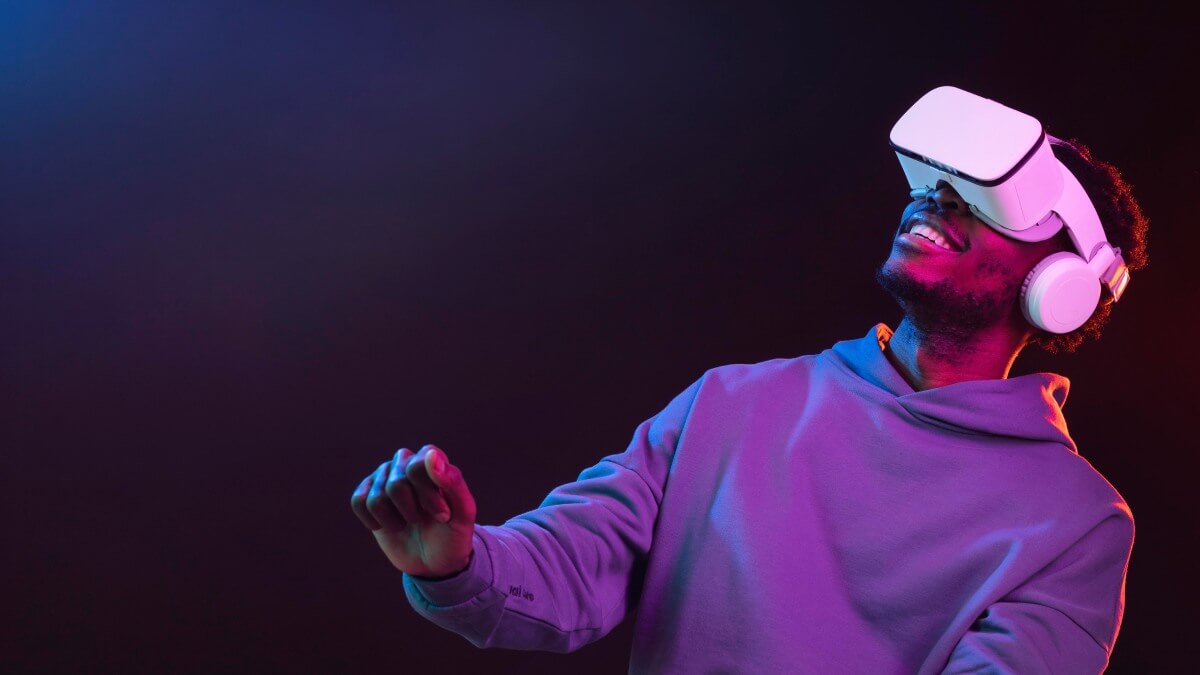In 2021 Facebook brought us another international buzzword – the Metaverse. Soon after, global businesses like Tommy Hilfiger, McLaren, and even Walmart started experimenting with retail and marketing in the Metaverse. So it’s no surprise that the Metaverse has become a synonym for innovation and new technology. But what’s the Metaverse history?
We can see physical products sold along with unique codes, so your avatar can wear the same clothes as you, unique worlds in games designed by brands, or even international concerts happening inside games.
But to know something is to know its history. So let’s go back in time and check the five key events that influenced the Metaverse history.
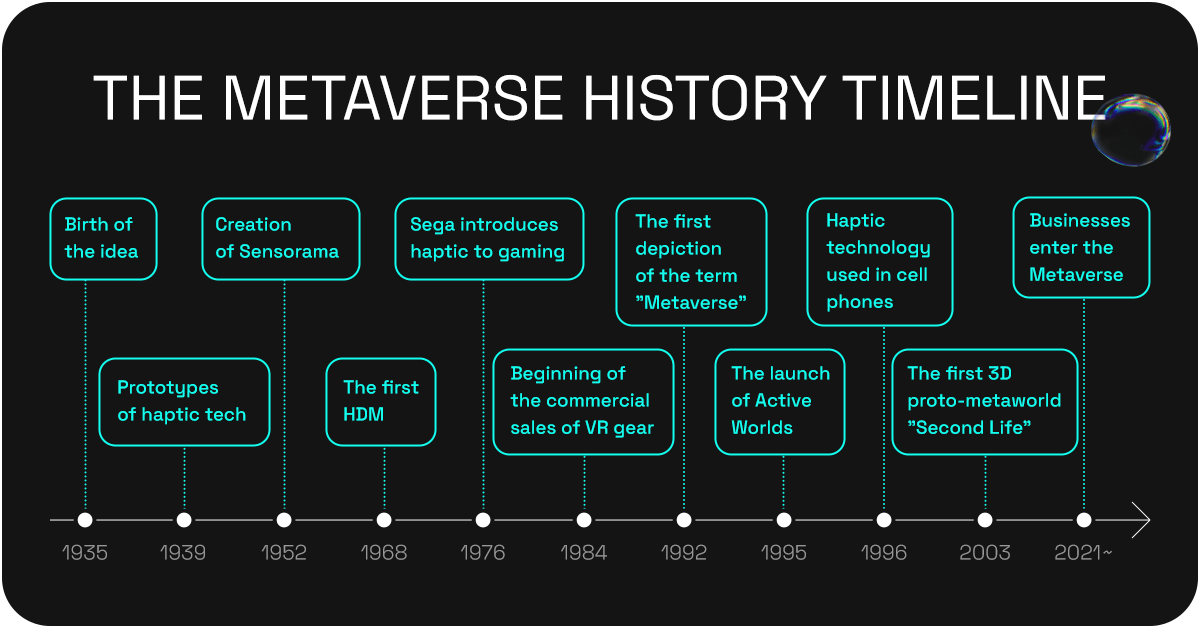
The origin of the concept (1935-1992)
It’s a known fact that many Sci-Fi authors predicted future technologies. For example, Polish writer Stanislaw Lem, whose predictions were highly accurate, described many technological solutions years in advance.
In the early 1950s, Lem considered connecting high-power computers to increase their data processing capabilities, universal access to a massive virtual database, or an earlier version of the smartphone, a small portable TV that allowed instant access to data from the data library.
Likewise, the Metaverse idea has been present in the minds of Sci-Fi authors since the early 20th century. People could see Metaverse-like worlds depicted in literature (e.g. “The Theater and its Double” by Antonin Artaud) or films like “2001: A Space Odyssey” and “The Matrix”.
However, the first clear vision was born in the mind of Neal Stephenson. His novel titled “Snow Crash” first depicted the immersive virtual realm that can be accessed by sporting VR goggles and called it the “Metaverse”.
Almost three decades later, his idea became a reality.
The early Virtual Reality (VR) experiences (1952-1990)
In the Metaverse history, the development of Virtual Reality was a big step forward. VR is essential for the growth and expansion of the Metaverse. The technology aids in creating the 3D virtual world. With VR, users can immerse themselves in interactive experiences that are hard to access in the physical environment.
Sensorama
The first VR machine, called the Sensorama, was created in 1952 by Morton Heilig; however, it was officially patented ten years later. It was a large booth, able to fit four people. It simulated all the senses with the help of multiple scent producers, a vibrating chair, stereo speakers and a stereoscopic 3D screen. The Sensorama was intended to immerse the individual in the film entirely. Heilig also created six short films, all of which he shot, produced and edited himself.
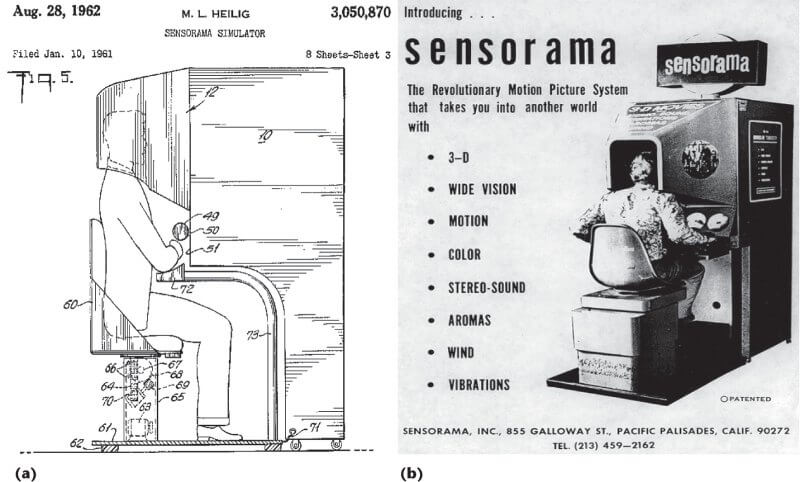 source: https://www.computer.org/publications/tech-news/research/experiencing-the-sights-smells-sounds-and-climate-of-southern-italy-in-vr
source: https://www.computer.org/publications/tech-news/research/experiencing-the-sights-smells-sounds-and-climate-of-southern-italy-in-vr
HDM
In 1968 Ivan Sutherland took another step that revolutionised the future of virtual reality. He created the first head-mounted display, named The Sword of Damocles. While it was very primitive and heavy, it had to be mounted to the ceiling; it was also the first device to display digital wireframe graphics. By moving their head, the headset user could see various primitive 3D models from different angles.
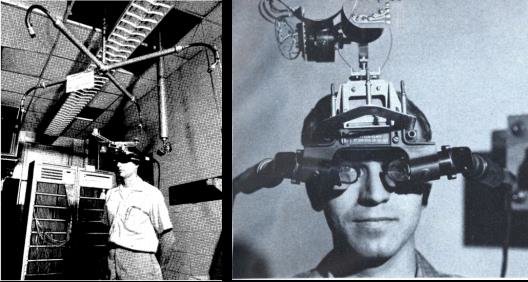
source: https://www.researchgate.net/figure/The-Sword-of-Damocles_fig1_326444949
VPL Research
VPL Research was a company founded in 1984 that popularised both the VR term and technology. They developed a range of Virtual Reality gear, including:
- Dataglove ($9,000)
- EyePhone 1 ($9,400)
- EyePhone HRX ($49,000)
The company filed for bankruptcy in 1990. Nine years later, all their patents were bought by Sun Microsystems. Their tech was a huge step in the area of VR and haptics.
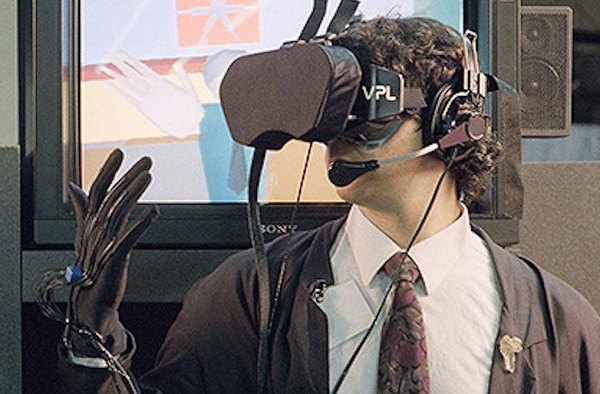
source: https://www.virtual-reality-shop.co.uk/vpl-research-inc-ep-01/
The beginning of haptic technology (1939-1996)
Haptic technology can create an experience of touch by applying forces, vibrations, or motions to the user. Like VR, haptics can bridge a crucial gap between the physical and digital worlds.
Military aircrafts
Like many other technologies, haptic technology was first used in the military. It can be traced back to WW2. The first tactile feedback system was developed for and used in aeroplanes to help pilots know when their engine was about to stall. The haptic feedback system, which would vibrate the control stick, was engaged when the engine neared stalling, enabling pilots to control their planes better.
Moto-Cross
Similar technology was introduced in gaming in 1976 by Sega. Sega’s Moto-Cross arcade game featured haptic feedback in the form of vibration in the joystick in response to a player crashing the bike or hitting the side of the road. Since then, vibration technology has become a standard in video game consoles.
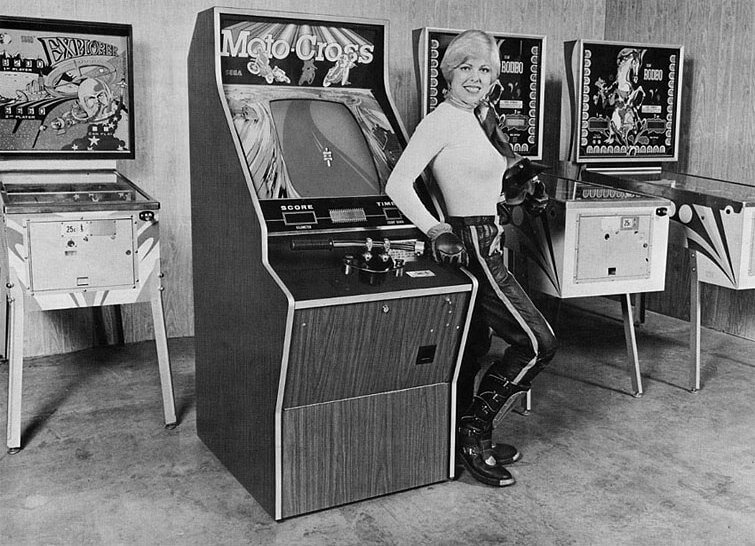 source: https://www.8-bitcentral.com/blog/2014/fonziArcade.html
source: https://www.8-bitcentral.com/blog/2014/fonziArcade.html
StarTac
Nevertheless, the biggest breakthrough in haptic technology was introduced in 1996, when Motorola created the StarTac cell phone. Since then, haptics has been used in almost all mobile devices, such as smartphones, tablets, and smartwatches.

source: https://medium.com/people-gadgets/the-gadget-we-miss-the-motorola-startac-9bc12db9eedb
The emergence of proto-metaworlds (1995-2003)
The Metaverse can’t exist without virtual spaces called metaplatforms and metaworlds. The Metaverse isn’t here yet, but the seeds, in the form of social games, have been planted. We are calling them proto-metaworlds. What are their characteristics?
- They bring people together in shared spaces
- They allow a shared 3D experience
- They all have their internal economy
Active Worlds
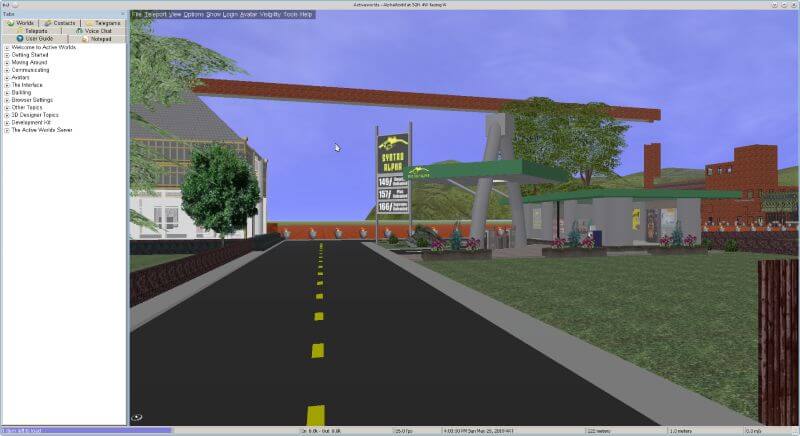
Source: https://lutris.net/games/active-worlds/
The first proto-metaworld called Active Worlds was created as early as 1995. Because of the time and technology available then, it doesn’t satisfy the condition of a 3D experience, but 2.5D is close enough.
The platform allowed users to assign themselves a name, log into the Active Worlds universe, and explore virtual worlds and environments that others have built. It was also possible for users to create their own worlds and universes and develop custom content. In addition, the browser has web browsing capabilities, voice chat, and basic instant messaging.
Second Life
A true breakthrough in the Metaverse history came along with the creation of Second Life in 2003. It incorporated many aspects of social media and allowed users to explore the world with their avatars and interact with objects and other users. Second Life does not have a designated objective, conventional gameplay mechanics, or rules, unlike a traditional computer game.
Second Life’s biggest boom happened around 2013-14 when it reached over one million monthly active users. Even though Second Life has not become a technology that has changed the way we look at the digital world, it sure was a milestone in how we see the Metaverse.
 source: https://www.bbc.com/news/technology-59180273
source: https://www.bbc.com/news/technology-59180273
Today, platforms like Roblox, Decentraland, or even Minecraft continue the work.
While not one business campaign changed the vision of the Metaverse business, 2021 and 2022 were turning points. Many companies started to see the business potential in the Metaverse.
Companies Expanding Into the Virtual World (2021~)
Nikeland
In 2021, the sports apparel giant Nike launched their first Metaverse campaign with a branded digital world inside Roblox. It was one of the first significant efforts from a top-tier brand to blend sales, marketing and gaming. It also provided a virtual showroom where visitors could flaunt their avatars’ new virtual Nike gear.
 source: https://news.xbox.com/en-us/2021/12/16/nikeland-on-roblox-discover-a-world-where-sport-has-no-rules/
source: https://news.xbox.com/en-us/2021/12/16/nikeland-on-roblox-discover-a-world-where-sport-has-no-rules/
Gucci Garden
Gucci’s first clash with the Metaverse was selling their famous handbag in Roblox. Surprising as it may seem, the digital handbag’s price was higher than its IRL counterpart.
Nevertheless, their biggest move is still the “Gucci Garden Archetypes”, a two-week virtual experience that explores and celebrates the house’s unique creative vision. Sometime later, the brand launched “Gucci Town”, also hosted on Roblox, which has been designed to be a virtual rendering of Vault (its concept store) and a space for visitors to come with friends.
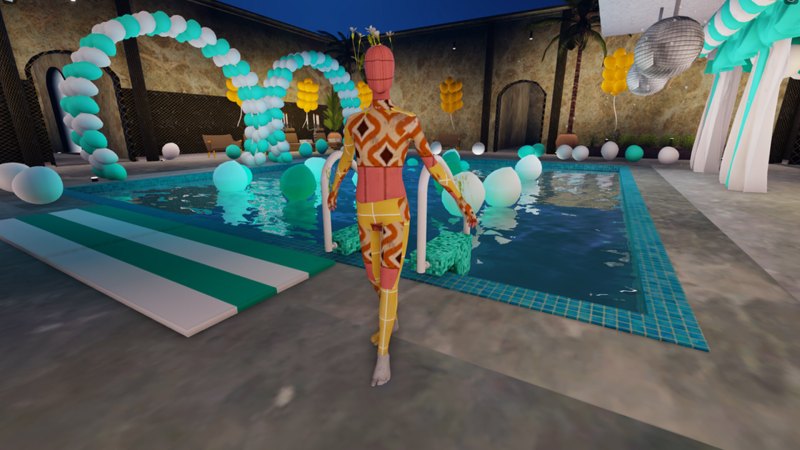
source: https://blog.roblox.com/2021/05/gucci-garden-experience/
NERF
Another example of a successful metaversal activation is the NERF campaign launched in 2022. The brand created NERF City in the game Fortnite.
They designed six unique worlds offering different attractions. They also shared a story that players discover in two ways – by navigating the NERF City map or through Murph, the brand’s non-binary mascot and guide. The campaign concept was based on storytelling, and the main communication channel was Discord NERF City. Players earned keys there that opened new doors to NERF worlds and won additional prizes.
The campaign culminated in the winners’ participation in the Esports Skills Camp, during which sports activities with NERF and meetings with Streamers took place. It was a perfect combination of digital and IRL events.
Only three companies from dozens entered the metaspace in a little more than a year. However, with the help of experts like inStreamly, we can expect a significant rise in Metaverse campaigns.
Workshop invitation
Did you like the brief Metaverse history, and you’re still thirsty for knowledge? Don’t sweat, there is a simple solution!
The Pragmatic Metaverse Workshops for Marketers will teach you everything you want to know about the Metaverse history and the Metaverse itself (and they are completely free!). It is the perfect way to get up to speed on the current state of the Metaverse. You’ll be exploring topics such as:
- What the Metaverse is and why it is on an excellent road to happening
- The opportunities and threats of the Metaverse
- The “seeds” of the Metaverse – proto-metaverse platforms
- What marketers should do now to get ahead
- How to create campaigns that explore the idea of the Metaverse right now
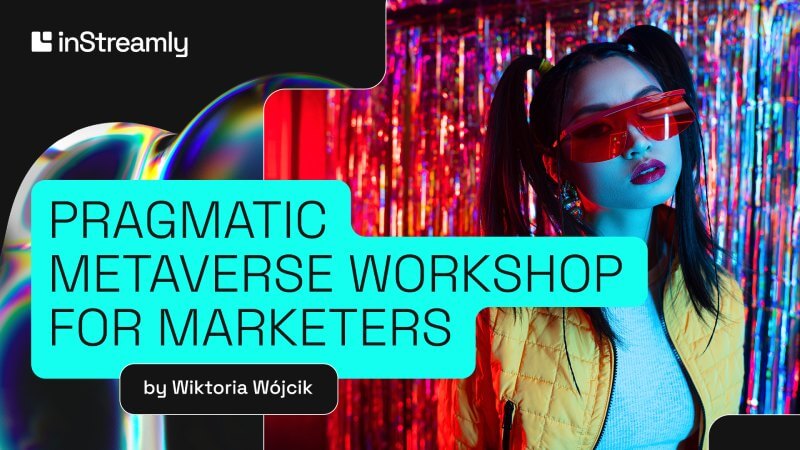
Take advantage of this opportunity to get ahead of the competition. Sign up now!
